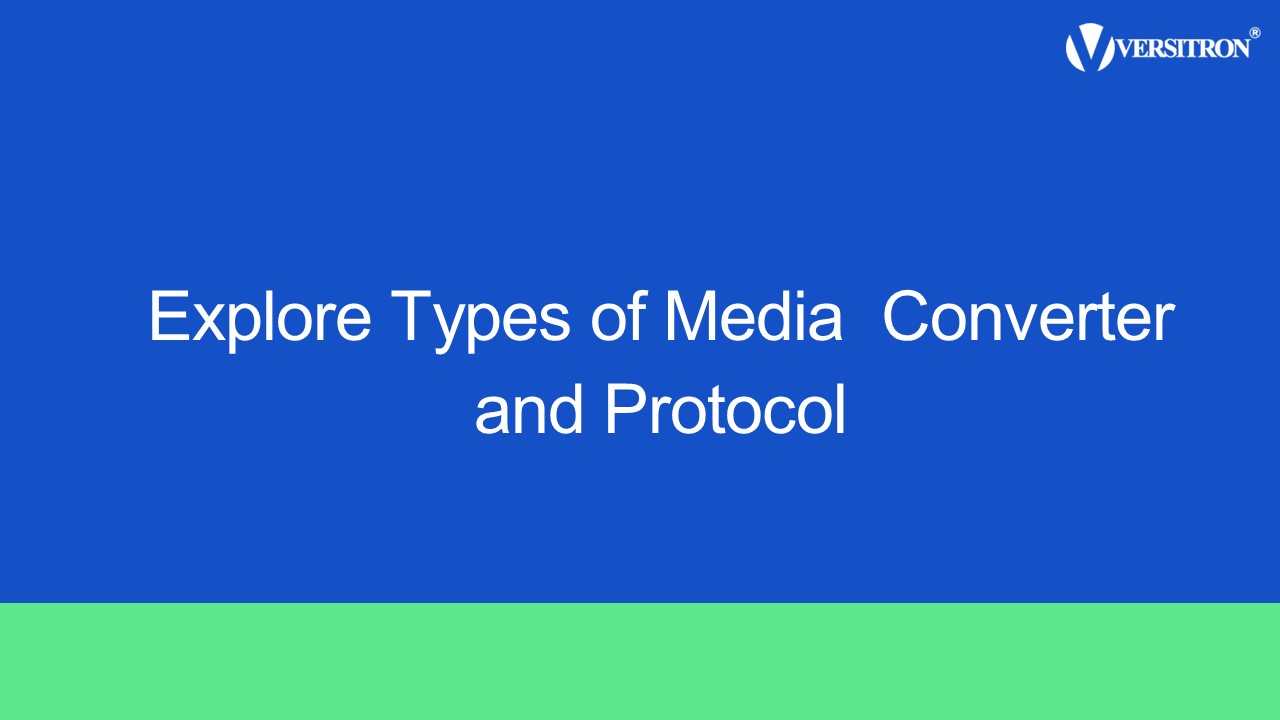Learn Types of Media Converter and Protocol - PowerPoint PPT Presentation
Title:
Learn Types of Media Converter and Protocol
Description:
A fiber optic media converter is used to connect fiber optic cables with copper cables and other non-fiber devices within the network. Know about Fiber Optic Media Converter Standards and Protocols here. – PowerPoint PPT presentation
Number of Views:1
Title: Learn Types of Media Converter and Protocol
1
Explore Types of Media Converter and Protocol
2
WHAT IS MEDIA CONVERTER?
Media Converter is used to connect two different
types of devices such as fiber optic cable with
copper cables. It converts electric signal into
optical signal and enable data transmission over
longer distances and at higher speeds. They can
also be used to connect devices in complex LAN
structures with different operation types,
speeds, modes, or cables. Finally, fiber optic
media converters can be used as standalone or
rackmount devices.
3
IMPORTANCE OF FIBER OPTIC MEDIA CONVERTER IN
MODERN NETWORKING
Media converters allow data to be transmitted
over longer distances and at higher speeds than
is possible with traditional copper cables.
Another important aspect of media converters is
their ability to provide reliable and secure data
transmission.
4
DIFFERENT FORMS OF MEDIA CONVERTERS
5
TYPES OF MEDIA CONVERTERS
Enterprise Media Converter
POE Media Converter
Hardened Media Converters
6
TYPES OF MEDIA CONVERTERS
Standard Media Converters
Carrier Ethernet Media Converters
Mini Media Converters
7
MEDIA CONVERTER STANDARDS PROTOCOL
10GBase 10 Gigabit Ethernet (10GbeE) or 10GBase
refers to a set of technologies that transmit
data at a rate of 10 gigabits per second. 10GBase
Ethernet standard largely defines full duplex
point-to-point links, rather than half-duplex
operations and hubs. This standard was earlier
defined by the IEEE 802.3ae-2002 standard.
Gigabit Ethernet (1000Mb) Gigabit Ethernet
(100Mb) is referred as 1 GigE or GbE. It delivers
data at the rate of 1 gigabit per second (Gbps).
Gigabit Ethernet serves as the backbone of
several enterprise networks. It utilizes
point-to-point configuration, where each cable
supports two devices on it. Currently, there are
five physical standards for Gigabit Ethernet.
Fast Ethernet Fast Ethernet (IEEE 802.3u)
assures a maximum data rate of 100 Mbit/s. This
standard is an extension of the switched Ethernet
standard. The Fast Ethernet over fiber is
referred to as 100Base-X. It operates over
optical fiber cable or UTP copper cabling. It was
the first standard that used to operate a star
wired bus topology
8
MEDIA CONVERTER STANDARDS PROTOCOL
Ethernet (10Mb) Ethernet used in local area
networks (LANs), wide area networks (WANs), and
metropolitan area networks (MANs). This standard
is defined by IEEE 802.3 standards. It was
earlier designed to run over coaxial cables.
Ethernet is used to connect various wired devices
together.
POTS It stands for Plain Old Telephone Service
and a voice-grade telephone service. POTS was the
first telephone service to utilize analog
transmission over copper loops. It operate in
bi-directional communications in the voiceband
frequency, which is 300-3300 Hz. POTS media
converters are used to connect voice grade
signals between a central office and a POTS
equipment using standard telephone signals, which
may be placed far from the central office.
Analog Analog transmission is the transmission
method where information is conveyed using a
continuous signal that varies in phase,
amplitude, or other properties, in proportion to
the information. Analog transmission can be
conducted through optical fibers and twisted pair
or coaxial cables, and underwater acoustic
communication or radio signals.
9
(No Transcript)































